Ocean Ramsey’s Shark Tips For Beginners: Everything You Need To Know Before Your First Dive
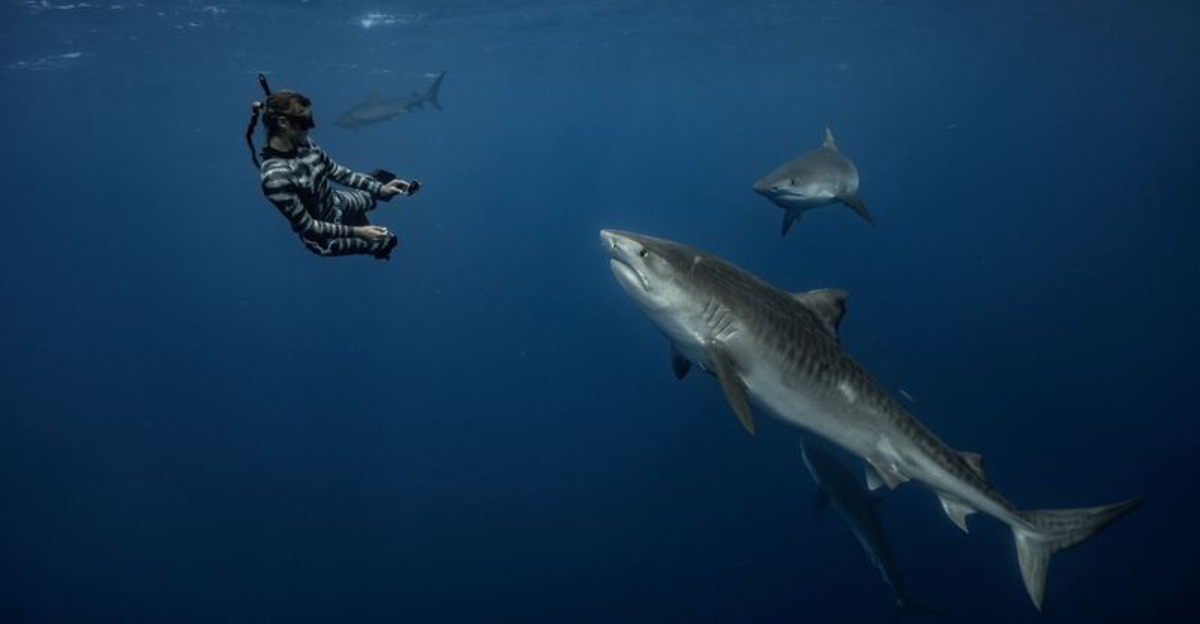
Swimming with sharks might sound scary, but with the right knowledge, it can be one of life’s most amazing adventures. Ocean Ramsey, famous for her gentle interactions with these ocean giants, has spent years studying their behavior and teaching others how to dive with them safely.
Before you take the plunge into shark-filled waters, there are some crucial things you should know to keep both you and these misunderstood creatures safe.
1. Respect Their Space
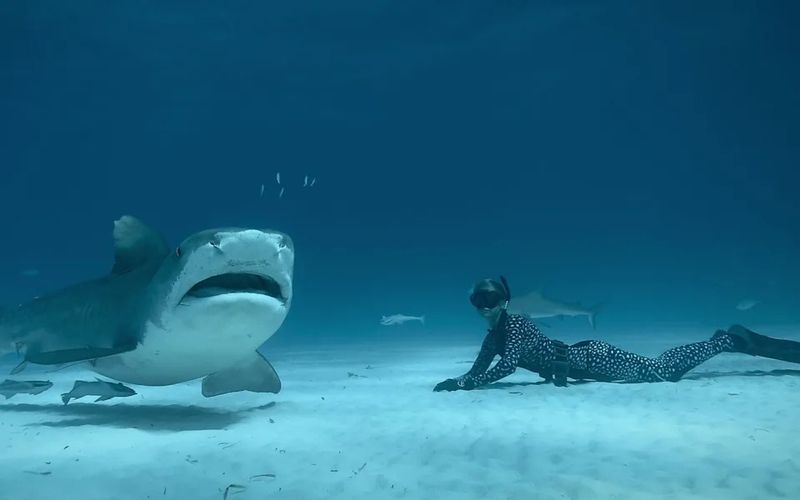
Sharks value personal space just like humans do. Swimming too close or approaching directly from behind can startle them or make them feel threatened. Always maintain a respectful distance of at least 10-15 feet.
Watch how the shark moves its body language. If fins are pointing down or it’s swimming erratically, that’s your cue to back off. Remember, you’re visiting their home, not the other way around.
Good encounters happen when sharks choose to approach you, not when you chase after them. Patience rewards divers with natural, stress-free interactions that are safer for everyone involved.
2. Move Smoothly And Calmly
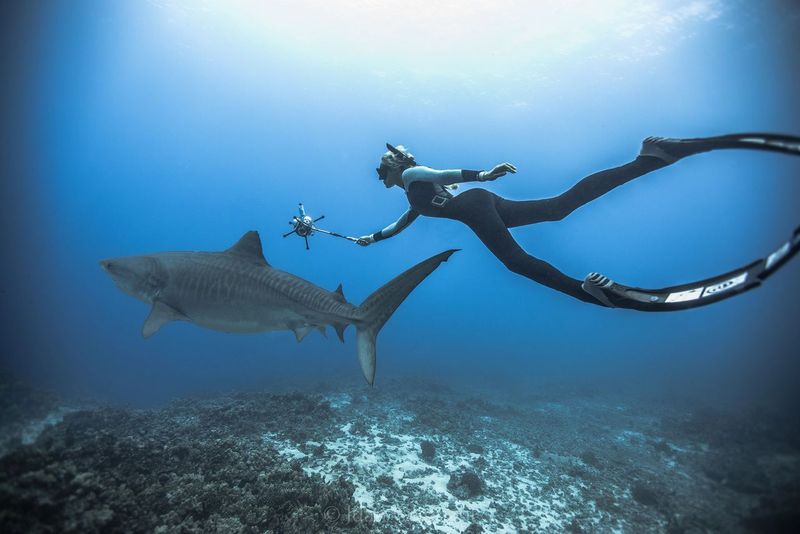
Sudden movements send the wrong signals underwater. Sharks are naturally curious about unusual activity, and jerky motions can trigger their predatory instincts or make them think you’re injured prey.
Breathe steadily through your regulator and glide through the water with deliberate, fluid movements. Keep your arms close to your body rather than flailing them around. This controlled behavior helps sharks recognize you as neither threat nor food.
Many beginners tense up when they first see a shark, but relaxing your muscles actually helps you move more gracefully through the water.
3. Learn To Read Shark Body Language
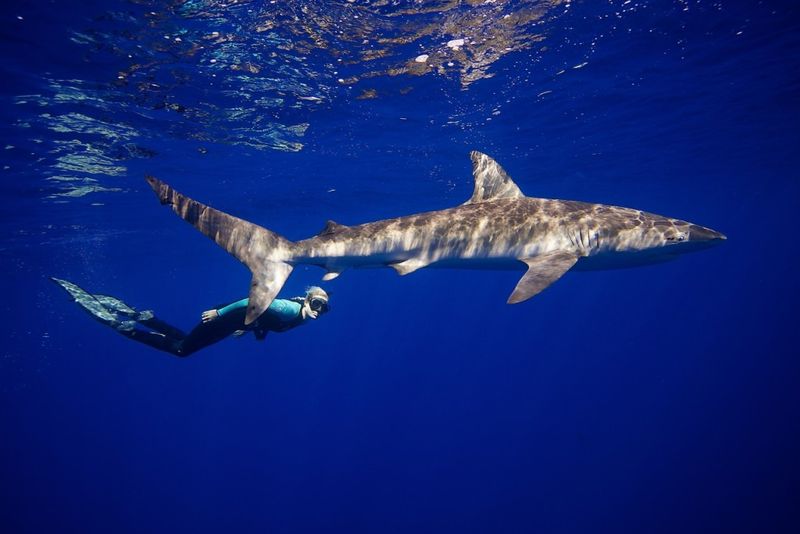
Sharks speak volumes through their movements. Arched backs, lowered pectoral fins, or quick, jerky swimming patterns signal agitation or stress – your cue to increase distance immediately. Relaxed, smooth swimming indicates a comfortable shark.
Watch for “gaping” – when a shark repeatedly opens and closes its mouth beyond normal breathing. This warning display means the shark feels threatened. Hunched backs and exaggerated swimming motions are also warning signs.
Different species display unique behaviors. Great whites often investigate with slow approaches, while reef sharks might circle repeatedly before deciding you’re not interesting enough to bother with.
4. Proper Diving Gear Matters
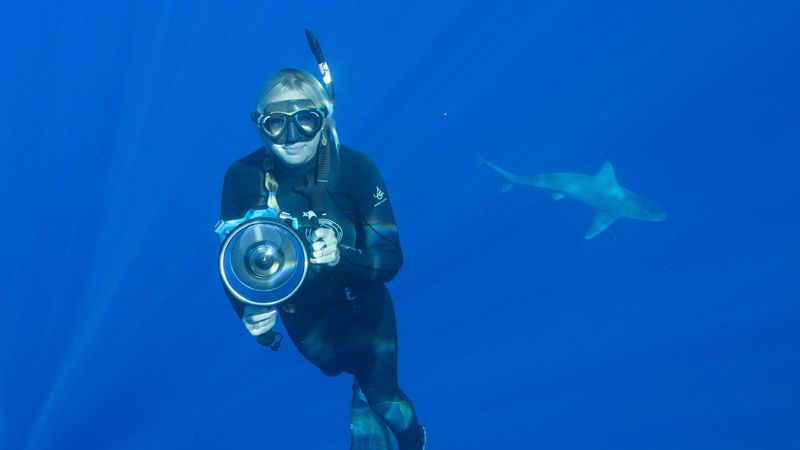
Flashy, reflective equipment catches unwanted attention underwater. Avoid wearing jewelry, watches with shiny surfaces, or brightly colored gear that might resemble fish scales in certain light. Matte black or navy wetsuits blend better with the deep blue environment.
Stash your GoPro in a non-reflective case. Those silvery camera housings can look remarkably like struggling fish from certain angles! Many experienced shark divers even cover logos and bright accents with black tape.
Gloves are essential for unexpected encounters with coral or rocks, not for touching sharks. Complete coverage with minimal skin exposure reduces your visibility as a potential food source.
5. Never Swim Alone
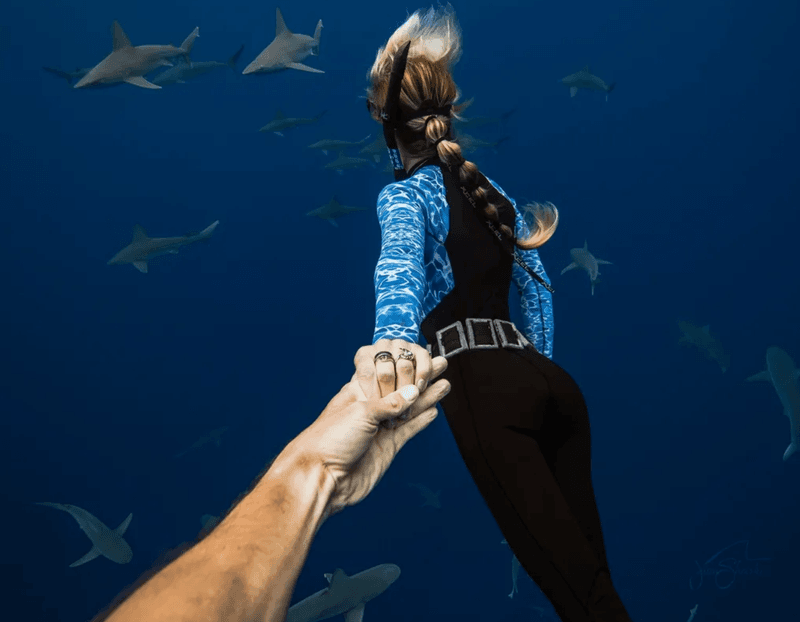
Buddy systems exist for a reason in the shark diving world. Having someone watch your back provides an extra set of eyes for spotting approaching sharks from blind angles. Experienced partners can also help calm nerves if you start to panic.
Professional guides know specific shark behaviors and local conditions. They can position groups optimally and recognize subtle warning signs before situations escalate. Their expertise transforms potentially dangerous encounters into educational experiences.
Groups create a larger visual presence underwater. Solitary swimmers more closely resemble typical prey, while clusters of divers present an unfamiliar profile that sharks typically approach with greater caution.
6. Avoid Dawn And Dusk Dives
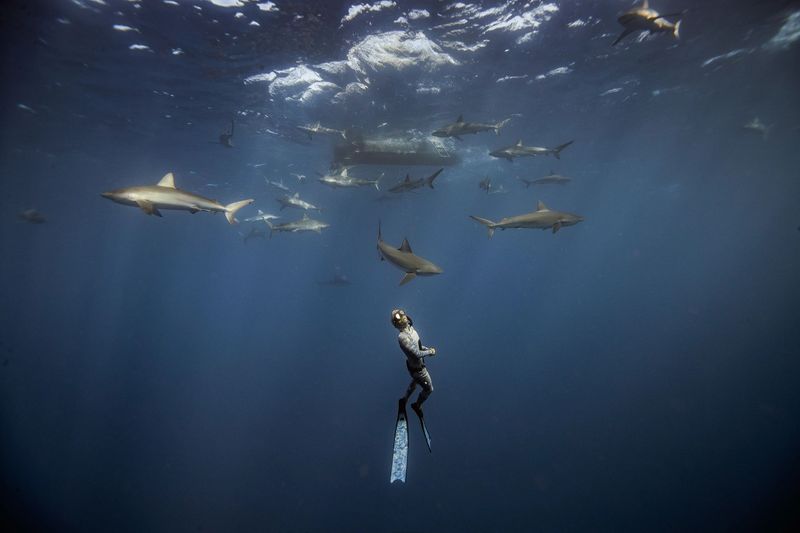
Sharks hunt most actively during twilight hours. Their specialized vision excels in low-light conditions, giving them a significant advantage over humans during dawn and dusk. These feeding times, known as the “shark’s dinner bell,” increase your chances of encountering hungry predators.
Mid-day dives offer better visibility for you to spot sharks before they get too close. The bright conditions also help sharks properly identify you as not-food, reducing mistaken identity bites that occasionally happen in murky conditions.
Some tour operators advertise sunset shark dives as more “thrilling.” For beginners, this added excitement comes with unnecessary risk – save these advanced experiences for after you’ve gained considerable shark diving experience.
7. Stay Vertical In The Water
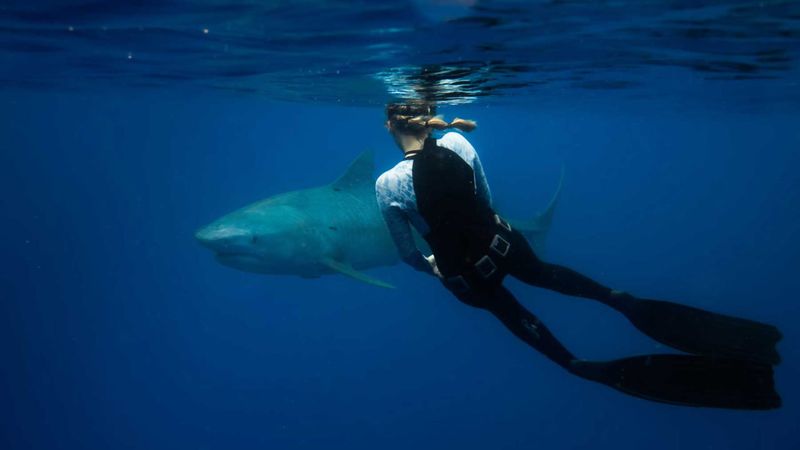
Horizontal swimming mimics the profile of seals and other prey animals that sharks naturally hunt. By maintaining a vertical position with your legs below you, you present an unfamiliar shape that doesn’t trigger hunting instincts.
Keep your head on a swivel! Maintain awareness in all directions, not just where you’re facing. Many divers focus solely on the shark they can see, forgetting that others might approach from behind or below.
If a shark shows too much interest, slowly rotate to face it. Making eye contact helps sharks recognize you’re aware of them and not helpless prey. This simple positioning technique has prevented countless unwanted close encounters.
8. No Feeding, Ever
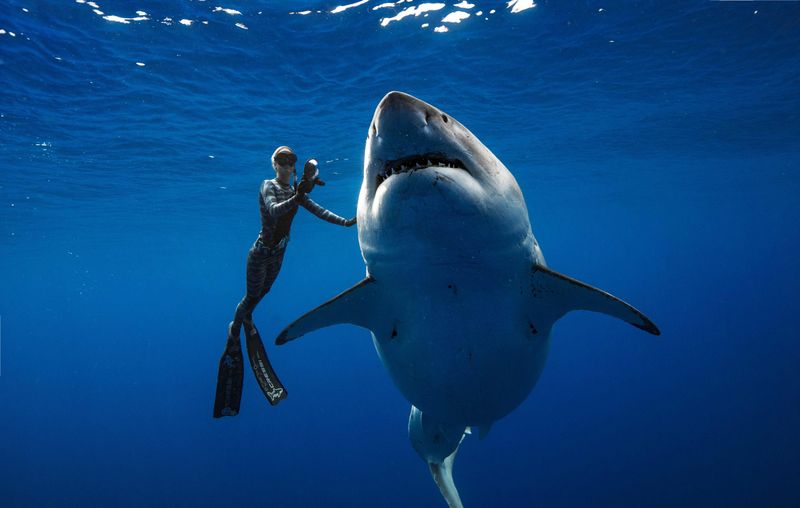
Hand-feeding sharks fundamentally changes their natural behavior. It creates dangerous associations between humans and food that can last for years. Sharks are perfectly capable of finding their own meals without our assistance!
Some tour operators still offer feeding experiences to guarantee sightings. These practices compromise safety for everyone who enters those waters later. Responsible operators attract sharks through other means like sound frequencies or natural scent trails.
Even carrying fish or speared catches while diving sends the wrong message. The blood and struggle of captured fish triggers feeding responses. Store any catches securely away from your body or better yet, on a separate boat.
9. Know Your Shark Species
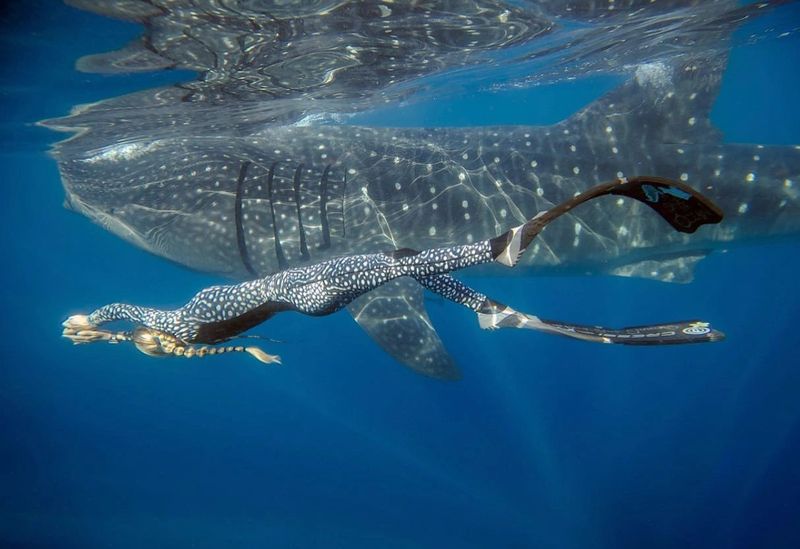
Different sharks require different approaches. Reef sharks tend to be curious but cautious, while tiger sharks move more deliberately and may require more personal space. Bull sharks, known for their territorial nature, demand extra vigilance and respect.
Whale sharks and basking sharks feed on plankton, not people! These gentle giants pose virtually no threat, though their massive size requires careful positioning to avoid accidental contact with powerful tails.
Great whites deserve special consideration due to their size and hunting techniques. They typically approach from below, so maintaining depth awareness becomes crucial. Study species-specific behaviors before entering waters where particular sharks are common.
10. Control Your Breathing
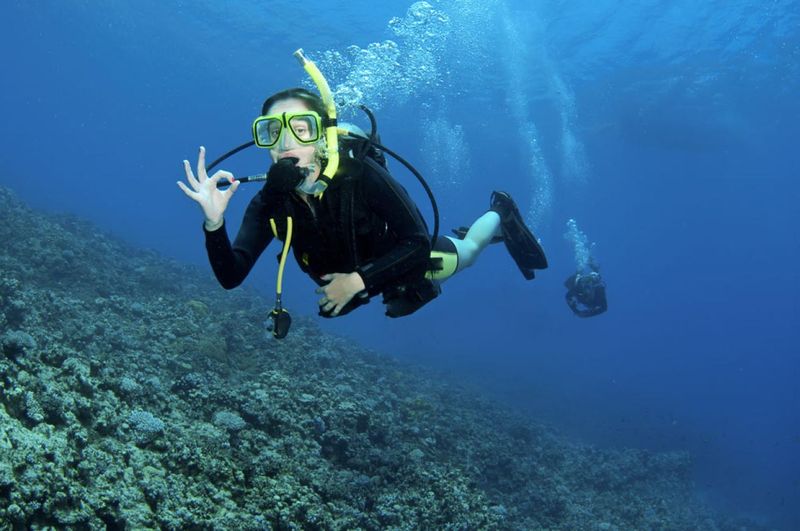
Panic is your worst enemy underwater. Rapid, shallow breathing depletes air supplies quickly and signals distress to nearby sharks. Practice controlled breathing techniques before your dive to manage inevitable adrenaline surges when sharks appear.
Experienced divers often use a 4-7-8 breathing pattern when excitement builds – inhale for 4 counts, hold for 7, exhale for 8. This conscious breathing helps maintain composure even when massive predators swim nearby.
Bubbles fascinate certain shark species, particularly younger ones. Excessive bubbling from rapid breathing sometimes attracts unwanted attention. Slow, deep breaths produce fewer, larger bubbles that rise straight up rather than creating a distracting cloud around you.
11. Exit Strategies Matter

Always plan your exit before entering shark territory. Know exactly how you’ll return to the boat or shore and communicate this plan with your diving partners. Quick, orderly exits prevent chaotic situations that might trigger predatory responses.
If a shark shows persistent interest, back away slowly toward your exit point. Never turn your back completely or swim frantically – these movements mimic prey behavior. Maintain visual contact while creating distance.
Some divers carry shark deterrents like bang sticks or electronic repellents. While these tools provide peace of mind, proper behavior remains your best protection. Most negative encounters happen when exit strategies fall apart due to panic.






